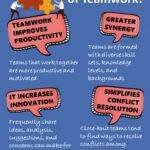
The Similarities and Differences Activity
Similarities and Differences is an activity in which people identify common things that everyone has in common, along with interesting characteristics that are unique to a person in the group.
Form groups of five to eight people and give them two sheets of paper and a pencil or pen. The first part of the activity is Similarities , where each subgroup compiles a list of the things they have in common.
In order for it to make the list, it must apply to everyone in the subgroup. You want to avoid writing things that people can see (e.g. “everyone has hair,” or “we are all wearing clothes”). Try to get them to dig deeper.
After about 5 minutes, have a spokesperson from each subgroup read their list.
Then, depending on your goals for the session, you can have half of each subgroup rotate to another group for Differences or you can leave everyone in the same group. On the second sheet of paper have them record differences, meaning that each item applies to only one person in the group. The group tries to find at least 2 differences for each person.
After 5-7 minutes, you can have each person say one of their uniquities or have a person read them one by one, having others try to guess who it was. (Again, you want to go beyond the superficial, avoiding those things that people can readily see).
Moment of Reflection
This is an excellent team-building activity because it promotes unity, gets people to realize that they have more in common than they first might realize. The awareness of their own unique characteristics is also beneficial in that people can feel empowered to offer the group something unique.
- Was it more difficult to find things in common or find particularities? – What benefits does having things in common bring to the group? And what benefits does having singularities bring?
- What did you like most about this activity?
- What might this activity teach us about how we can work together more successfully?
The topics of this publication: integration, diversity, reflection, critical thinking, interactions, teamwork, self, foster relationships


